In a series of war games in the seas and skies around Taiwan last month, China deployed some of its newest strike aircraft, warships and missile forces.
One of the most menacing weapons used in the drills: an updated version of a bomber that first flew in the early years of the Cold War.
Like the US, which still relies on upgraded versions of the B-52, a bomber from the same era, China has successfully modernized its jet-powered H-6 to carry on flying deep into the 21st century.
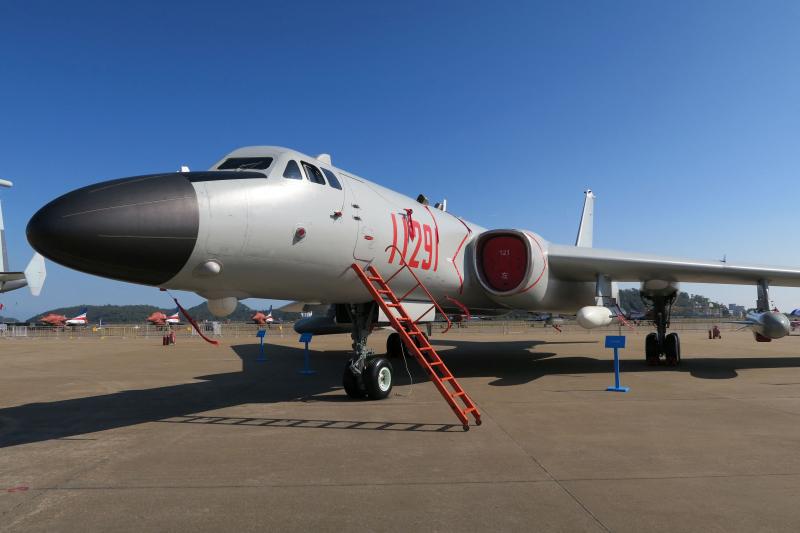
Photo: Reuters
These bombers were shown on China’s state-controlled media taking off for missions designed to intimidate Taiwan as part of the war-game drills.
Dubbed “Joint-Sword 2024B” by China’s military, the maneuvers were a “stern warning” to people in Taiwan seeking independence, the Chinese military said.
Taiwan’s Ministry of National Defense reported that 153 Chinese military aircraft, 14 naval vessels and 12 other ships were detected around the nation over a 25-hour period after the start of the exercise on Oct. 14.
The ministry also reported that 111 of the aircraft had crossed the median line of the Taiwan Strait and entered the nation’s air defense identification zone.
The ministry told Reuters that “three groups of three H-6 aircraft” had been detected operating in the nation’s airspace during China’s military exercise.
Two of the groups “conducted simulated attack drills,” the ministry said.
China’s Ministry of National Defense did not respond to questions for this story.
Some modernized versions of China’s H-6 bomber are now capable of launching ballistic missiles armed with nuclear warheads, while others can carry multiple long-range anti-ship and land attack missiles, according to defense analysts and Pentagon reports on the Chinese military.
Some versions can be refueled in flight, allowing them to fly from bases on the Chinese mainland and strike at targets deep into the Western Pacific, where the US has large bases on Guam and elsewhere.
Asked about the military drills, Taiwan’s defense ministry said the nation was using “joint intelligence surveillance to keep track of the communist military's movements around Taiwan,” while also dispatching “air, sea and missile forces to respond as appropriate to ensure national defense and security.”
Pentagon spokesperson Major Pete Nguyen said the US was “prepared to respond to any threat and protect the homeland.”
US Secretary of Defense Lloyd Austin “has often said that he does not believe conflict with the PRC [People’s Republic of China] is imminent nor inevitable,” Nguyen said in response to questions.
Unlike the US, which stopped building the B-52 in 1962, China has continued to make the twin-engine H-6 at a plant in central China.
However, H-6 production may have recently slowed or been halted, according to Thomas Shugart, a former US Navy submarine officer and an expert on China’s military.
He estimates the Chinese air force now has about 230 of these bombers.
The H-6 is derived from the Tupolev Tu-16 bomber, which the Soviet Union introduced into service in the early 1950s and was given the NATO code name Badger.
China began building these aircraft under license in the late 1950s, according to experts on the Chinese People’s Liberation Army.
The Taiwanese and Japanese militaries have reported that H-6 bombers have been frequently deployed on flights near their airspace in recent years.
They are also sent on flights over the South China Sea, where Beijing claims sovereignty over extensive areas of disputed territory.
In a conflict, these bombers would pose a serious threat to ships and targets on land, US and Taiwanese military experts say.
Shugart said that Chinese military doctrine for island landing campaigns, such as an invasion of Taiwan, calls for strikes against headquarters, communications facilities, logistics centers and other key targets, along with attacks on airfields, ports and ships at sea.
“I would expect H-6s to be involved in all of these sorts of operations,” he said.
These attacks would likely be coordinated with missile strikes, possibly without warning, that would soften air defenses and crater runways to trap aircraft on the ground, Shugart added.
He said these aircraft could then be hit with cruise missiles launched from H-6 bombers.
China’s official media in mid-September provided some insight into the role the H-6 might play in a clash off the Chinese coast.
State broadcaster CCTV showed footage of one of these bombers flying in an exercise with fighters and a long-range WZ-7 surveillance drone.
The drone penetrated the air defenses of a potential adversary, identified a target and relayed this information to the H-6, according to the footage.
The bomber was shown launching an anti-ship missile.
Experts say the US should try to neutralize the H-6 bombers while they are still on the ground.
“Any common sense war plan would target those aircraft before they could take off,” said David Deptula, dean of the Washington-based Mitchell Institute for Aerospace Studies and a retired US Air Force lieutenant general.
In March testimony to the US-China Economic and Security Review Commission, Shugart said that China’s H-6 force has expanded and these aircraft now have improved airframes, technology, engines and long-range weapons.
While regularly sending the H-6 on missions off the Chinese coast, Beijing is now deploying these aircraft in the same way the US Air Force uses long-range patrols of the B-52 and its other bombers to signal its ability to strike at distant targets.
On July 24, US and Canadian fighter jets scrambled to intercept a joint patrol of two Chinese H-6 and two Russian Tu-95 bombers near Alaska, according to a statement from the North American Aerospace Defense Command (NORAD).
While the Russians conduct regular patrols in this area, it was the first time Chinese bombers had flown close to the US mainland in an operation that revealed the growing power and confidence of China’s military, former US air force officers said.
The flights were not seen “as a threat, and NORAD continues to monitor competitor activity near North America and meet presence with presence,” Nguyen said.
The Chinese and Russian defense ministries did not respond to a request for comment.
A spokesman for China’s Ministry of National Defense, Senior Colonel Zhang Xiaogang (張曉剛), told a news conference at the time that the joint patrol was to test and improve coordination between the Chinese and Russian air forces.
“This operation does not target any third party,” Zhang said.
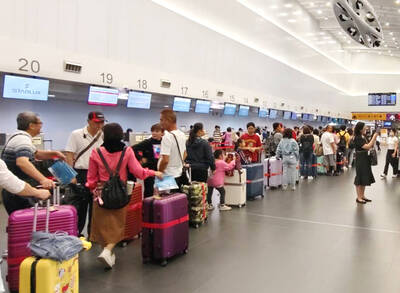
Three Taiwanese airlines have prohibited passengers from packing Bluetooth earbuds and their charger cases in checked luggage. EVA Air and Uni Air said that Bluetooth earbuds and charger cases are categorized as portable electronic devices, which should be switched off if they are placed in checked luggage based on international aviation safety regulations. They must not be in standby or sleep mode. However, as charging would continue when earbuds are placed in the charger cases, which would contravene international aviation regulations, their cases must be carried as hand luggage, they said. Tigerair Taiwan said that earbud charger cases are equipped
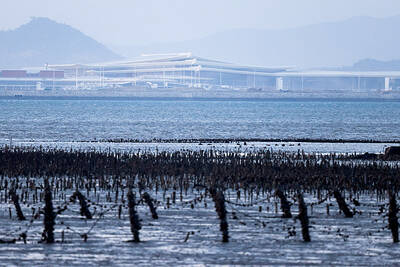
UNILATERAL MOVES: Officials have raised concerns that Beijing could try to exert economic control over Kinmen in a key development plan next year The Civil Aviation Administration (CAA) yesterday said that China has so far failed to provide any information about a new airport expected to open next year that is less than 10km from a Taiwanese airport, raising flight safety concerns. Xiamen Xiangan International Airport is only about 3km at its closest point from the islands in Kinmen County — the scene of on-off fighting during the Cold War — and construction work can be seen and heard clearly from the Taiwan side. In a written statement sent to Reuters, the CAA said that airports close to each other need detailed advanced
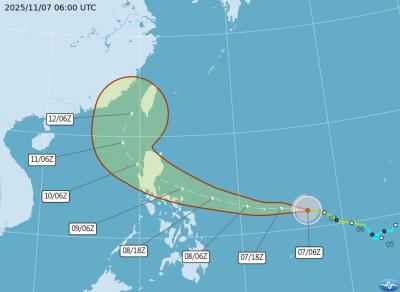
Tropical Storm Fung-Wong would likely strengthen into a typhoon later today as it continues moving westward across the Pacific before heading in Taiwan’s direction next week, the Central Weather Administration (CWA) said. As of 8am, Fung-Wong was about 2,190km east-southeast of Cape Oluanpi (鵝鑾鼻), Taiwan’s southernmost point, moving westward at 25kph and possibly accelerating to 31kph, CWA data showed. The tropical storm is currently over waters east of the Philippines and still far from Taiwan, CWA forecaster Tseng Chao-cheng (曾昭誠) said, adding that it could likely strengthen into a typhoon later in the day. It is forecast to reach the South China Sea
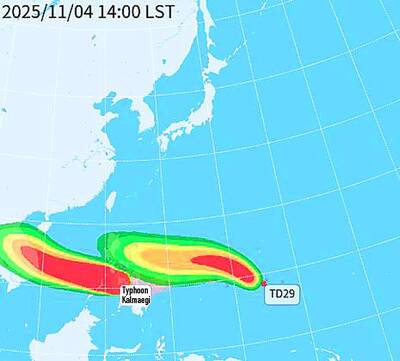
WEATHER Typhoon forming: CWA A tropical depression is expected to form into a typhoon as early as today, the Central Weather Administration (CWA) said yesterday, adding that the storm’s path remains uncertain. Before the weekend, it would move toward the Philippines, the agency said. Some time around Monday next week, it might reach a turning point, either veering north toward waters east of Taiwan or continuing westward across the Philippines, the CWA said. Meanwhile, the eye of Typhoon Kalmaegi was 1,310km south-southeast of Oluanpi (鵝鑾鼻), Taiwan’s southernmost point, as of 2am yesterday, it said. The storm is forecast to move through central